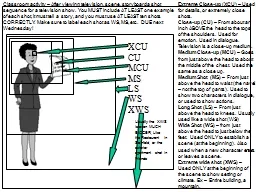PPT-Close Reading In Practice
Author : tatyana-admore | Published Date : 2016-04-20
How to develop sophisticated analysis Swift first describes Celia right after she finishes dressing The goddess from her chamber issues Arrayed in lace brocades
Presentation Embed Code
Download Presentation
Download Presentation The PPT/PDF document "Close Reading In Practice" is the property of its rightful owner. Permission is granted to download and print the materials on this website for personal, non-commercial use only, and to display it on your personal computer provided you do not modify the materials and that you retain all copyright notices contained in the materials. By downloading content from our website, you accept the terms of this agreement.
Close Reading In Practice: Transcript
Download Rules Of Document
"Close Reading In Practice"The content belongs to its owner. You may download and print it for personal use, without modification, and keep all copyright notices. By downloading, you agree to these terms.
Related Documents














